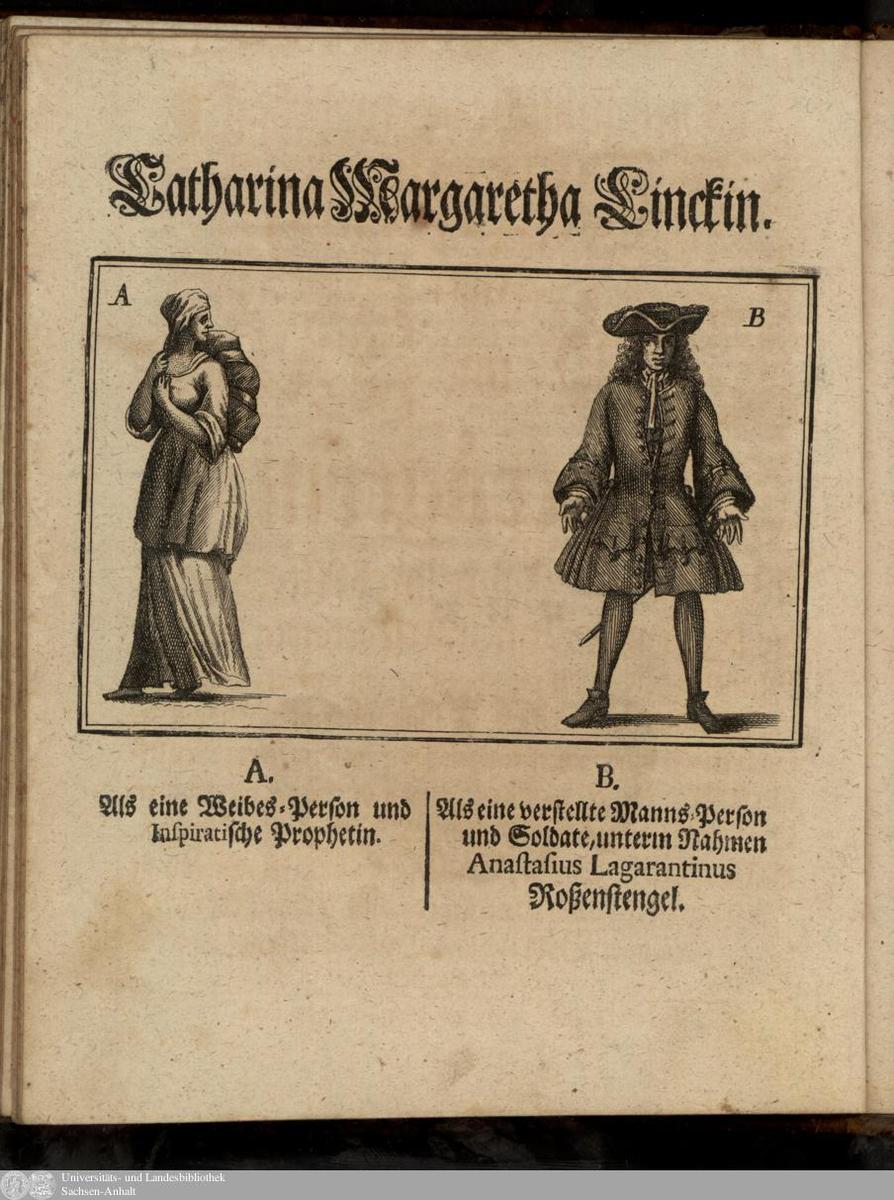Catharina Margaretha Linck, “A Swindler of Land and People” (1720)
Abstract
This pamphlet from 1720 claims to contain a “detailed and true description of a swindler of land and people.” Catharina Margaretha Linck (1687-1721) a.k.a. Anastasius Lagrantinus Rosenstengel is a particularly interesting example of cross-dressing in order to change one’s gender identity, which often coincided with spatial mobility. Using the identity of Rosenstengel, Catharina Linck first appeared as a prophet before spending several years as a soldier. She temporarily switched her identity back to that of a woman to work as a calico printer before taking on a male identity again in order to marry Catharina Margaretha Mühlhahn. She was eventually found out, exposed, and reported to the authorities by her mother in law, and, in 1721, she was executed for sodomy. Using different identities, Linck/Rosenstengel is documented to have traveled to Brussels, Terbank, Antwerp, Münster, Cologne, Soest, Rheinfels, Hildesheim, Helmstadt, Halberstadt, Calbe, Gehofen, Wittenberg, Nuremberg and Halle.
Source

Source: Catharina Margaretha Linck (1687–1721), frontispiece of the pamphlet: Umständliche und wahrhaffte Beschreibung einer Land- und Leute-Betrügerin: Welche im 12ten Jahre ihres Alters unter die so genannten Inspiraten gerathen, und in Manns-Kleidern mit ihnen herum vagiret, sich etliche mahl tauffen, auch als eine Manns- mit einer Weibs-Person trauen lassen ... endlich aber ... verrathen ... in Arrest genommen, und ... ihr ... Betrug und Boßheiten entdecket worden. [S.l.], 1720. Online available at: ULB Sachsen-Anhalt, http://nbn-resolving.de/urn:nbn:de:gbv:3:3-7125